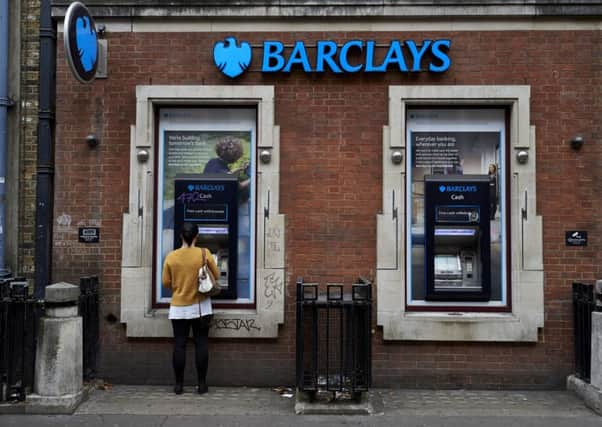Lloyds and Barclays poised to reveal impact of Brexit vote


Although the EU referendum last month will have come too late to affect the figures, both are expected to update on any indications of the impact on current trading and how lower interest rates and currency fluctuations may affect them.
Lloyds is expected to report a jump in pre-tax profits on Thursday to £2.35 billion for the first half of the year, up from £1.19bn over the period in 2015, according to consensus figures. The lender’s profits took a hit in the period last year when it added £1.4bn to its bill for compensating customers mis-sold payment protection insurance (PPI).
Advertisement
Hide AdAdvertisement
Hide AdThe consensus figures, which were compiled before the Brexit vote and are based on the views of 15 analysts, have pencilled in the bank’s net interest income to edge up to £5.81bn over the period, compared to £5.71bn the year before.
Deutsche Bank analyst David Lock said, given that Brexit was late into the quarter, he expected limited impact on results from the referendum decision. “Instead we think the focus will rest not on second-quarter performance, but on management commentary for outlook on margin and sensitivity to lower rates, lending growth especially in consumer finance, dividends and any cost plans.”
The bank said in April that it delivered a “robust” performance in the first three months of the year, despite posting falling profits.
Barclays posts its half-year figures on Friday after a better-than-expected results season from its US counterparts, and boss Jes Staley will be looked to for further details on its plans following the vote when he unveils interim results.
The figures come after deal-making and trading revenues have come under pressure in recent months, although US investment banks have put in a robust performance thanks to a second-quarter bounce back.
JP Morgan, Citi and Goldman Sachs are all among those who have surprised Wall Street with their results for the three months to the end of June. Goldman Sachs posted a 74 per cent surge in earnings for the second quarter, thanks largely to cost cutting and lower legal costs, but also soaring fixed income trading revenue.
Ian Gordon, banking analyst at Investec, said Barclays is likely to benefit from the fixed income boost, but also the stronger dollar versus the pound, as it makes a hefty amount of investment banking revenues in dollars.
But he said revenues overall are likely to remain under pressure, with the retail bank’s woes only set to worsen if interest rates are cut, as many expect. “The second quarter is likely to be OK for Barclays, but the real issues are the negative impact of any interest rate cut and possible slowdown in loan growth,” Gordon said.
Analysts warned last month that Lloyds and Royal Bank of Scotland could remain part-owned by the taxpayer for years to come after the stock market chaos caused by Brexit.